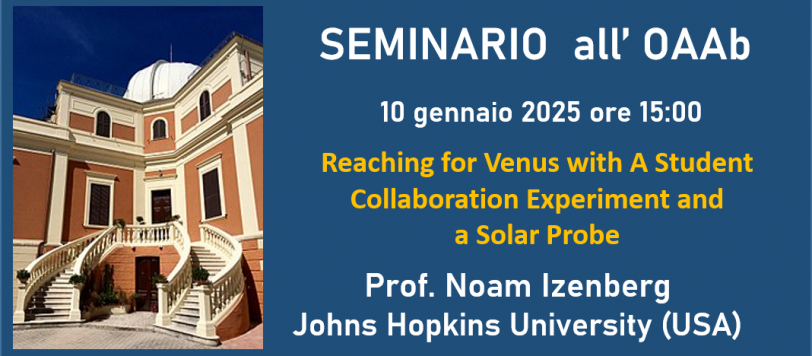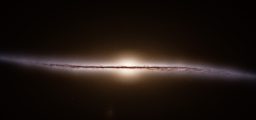Reaching for Venus with A Student Collaboration Experiment and a Solar Probe

Venerdì 10 gennaio alle ore 15:00, il Prof. Noam Izenberg, Principal Professional Staff presso Applied Physics Laboratory, Johns Hopkins University (USA), terrà il seminario dal titolo “Reaching for Venus with A Student Collaboration Experiment and a Solar Probe“.
Abstract
The VƒOx project teaches students about planetary missions by building and operating a simple instrument for the DAVINCI mission. Students will construct VƒOx, analyze its data, and join DAVINCI science activities. VƒOx addresses a single question about Venus’ atmosphere, requiring knowledge of atmospheric dynamics, surface chemistry, and their interplay. This drives sensor requirements, engineering, and teaching methods. Developing a flight sensor involves learning instrument systems, design, and integration into a larger mission, offering students hands-on experience with an end-to-end mission during their university careers.
In 2023-2024, the first summer included five full-time and three part-time interns working on six projects. The spring 2024 “Spacecraft Instrumentation Project” (SIP) course at Johns Hopkins involved 23 students. Summer and course projects, results, and lessons learned will be shared. SIP will run each semester with new students and evolving goals until VƒOx is delivered for mission integration (likely 2028), followed by testing and launch (2031-2).
Parker Solar Probe at Venus: On November 6, 2024, Parker Solar Probe completed its 7th and final planned Venus flyby (VGA7). Like flybys 3 and 4, the WISPR cameras (inner and outer) imaged Venus’ nightside surface through clouds, detecting emissions from the hot surface via the “WISPR window” (720–780 nm). These emissions primarily reflect surface temperature, which correlates with elevation, but can also indicate atmospheric, compositional, or surface variations.
Unlike VGA 3 and 4, which passed over Aphrodite Terra and Ovda Regio, VGA 7’s path covered Guinevere Planitia and closely approached Beta-Atla-Themis (~300 km altitude), capturing high-resolution images of Laufey Regio, known for volcanic and tectonic features. Over 50 images were taken during the flyby, doubling WISPR’s Venus surface dataset and revealing new terrains such as volcanic flows, rifts, crater ejecta, and tesserae.
Co-registration of VGA7 images with Magellan data requires final ephemerides and pointing information from Parker Solar Probe, currently being processed. These data, along with level 2 processed images, will be compared with Magellan SAR, topography, and radar emissivity. Improved pointing and camera data will enhance scattered light correction, providing better context for WISPR-O’s broader images and improved co-location for WISPR-I’s smeared images, aiding in distinguishing surface from atmospheric variations.






Comments are closed.